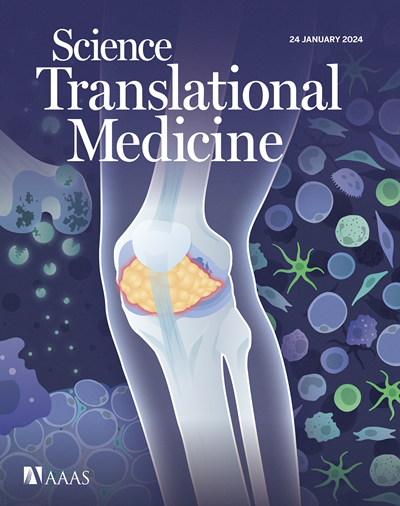Self-regulating gene therapy ameliorates phenotypes and overcomes gene dosage sensitivity in a mouse model of Rett syndrome
IF 15.8
1区 医学
Q1 CELL BIOLOGY
引用次数: 0
Abstract
Conventional methods of gene transfer lead to inconsistent transgene expression within cells. This variability can be problematic, particularly in conditions like Rett syndrome (RTT), a neurological disorder caused by mutations in the MECP2 (methyl-CpG binding protein 2) gene, because overexpression of MECP2 can also cause adverse effects. To address these challenges, we devised a gene regulation system called Expression Attenuation via Construct Tuning (EXACT), which uses a self-contained, microRNA-based feed-forward loop that not only ensures more consistent transgene expression but also protects against excessive expression. Through cell-based screening assays, we demonstrated the ability of the EXACT circuit to modulate the expression of full-length human MeCP2. Compared with a conventional construct, an EXACT-MECP2 construct exhibited a narrower range of cellular protein abundance. Furthermore, the degree of regulation by the EXACT circuit increased with higher transgene doses in vitro and in wild-type mice and mice modeling RTT. On the basis of cellular and in vivo testing, we identified an optimal configuration for the adeno-associated virus serotype 9 (AAV9) construct for self-regulated MECP2 gene therapy, designated NGN-401. Delivery of NGN-401 to neonatal male Mecp2−/y hemizygous mice via intracerebroventricular injection resulted in prolonged survival and amelioration of RTT-like phenotypes compared with vehicle-treated animals. NGN-401 was also well tolerated by female Mecp2+/− mice and healthy juvenile nonhuman primates, in contrast with a conventional construct, which caused toxicity. The results from these studies underpin a first-in-human pediatric trial of NGN-401 in RTT (ClinicalTrials.gov, NCT05898620).
求助全文
约1分钟内获得全文
求助全文
来源期刊

Science Translational Medicine
CELL BIOLOGY-MEDICINE, RESEARCH & EXPERIMENTAL
CiteScore
26.70
自引率
1.20%
发文量
309
审稿时长
1.7 months
期刊介绍:
Science Translational Medicine is an online journal that focuses on publishing research at the intersection of science, engineering, and medicine. The goal of the journal is to promote human health by providing a platform for researchers from various disciplines to communicate their latest advancements in biomedical, translational, and clinical research.
The journal aims to address the slow translation of scientific knowledge into effective treatments and health measures. It publishes articles that fill the knowledge gaps between preclinical research and medical applications, with a focus on accelerating the translation of knowledge into new ways of preventing, diagnosing, and treating human diseases.
The scope of Science Translational Medicine includes various areas such as cardiovascular disease, immunology/vaccines, metabolism/diabetes/obesity, neuroscience/neurology/psychiatry, cancer, infectious diseases, policy, behavior, bioengineering, chemical genomics/drug discovery, imaging, applied physical sciences, medical nanotechnology, drug delivery, biomarkers, gene therapy/regenerative medicine, toxicology and pharmacokinetics, data mining, cell culture, animal and human studies, medical informatics, and other interdisciplinary approaches to medicine.
The target audience of the journal includes researchers and management in academia, government, and the biotechnology and pharmaceutical industries. It is also relevant to physician scientists, regulators, policy makers, investors, business developers, and funding agencies.
 求助内容:
求助内容: 应助结果提醒方式:
应助结果提醒方式:


